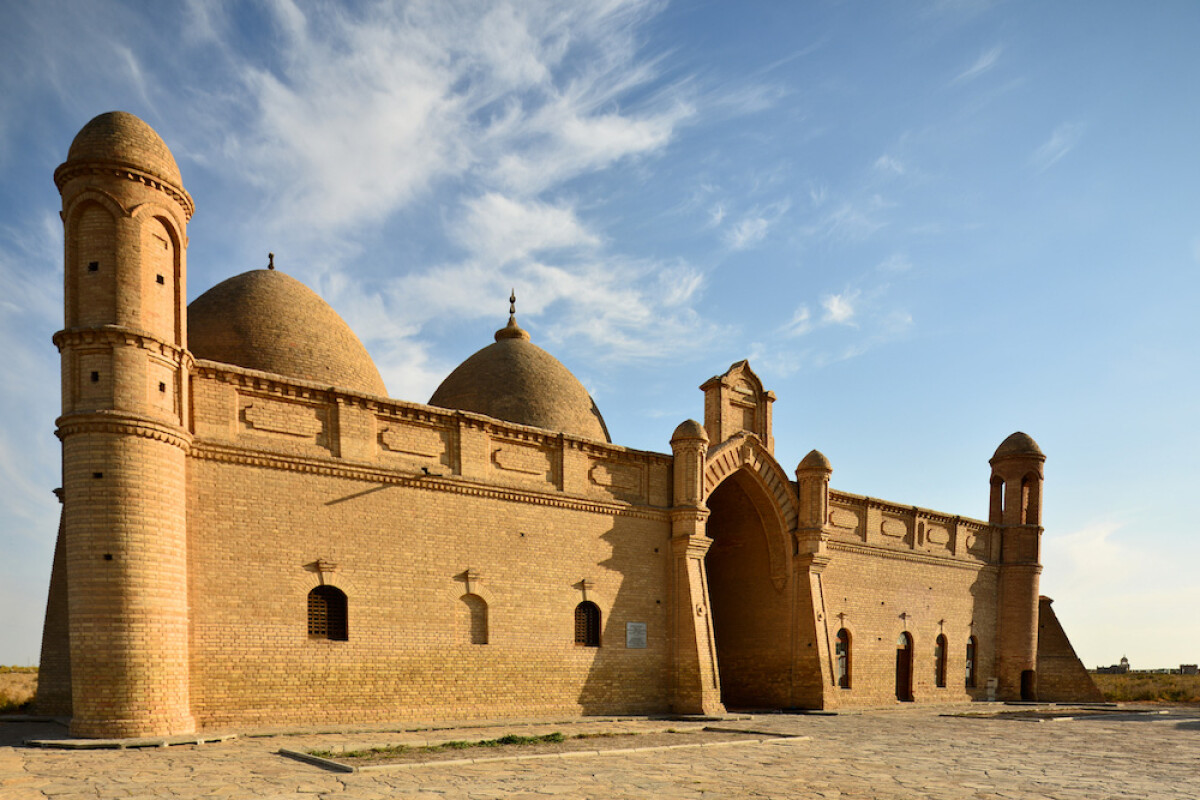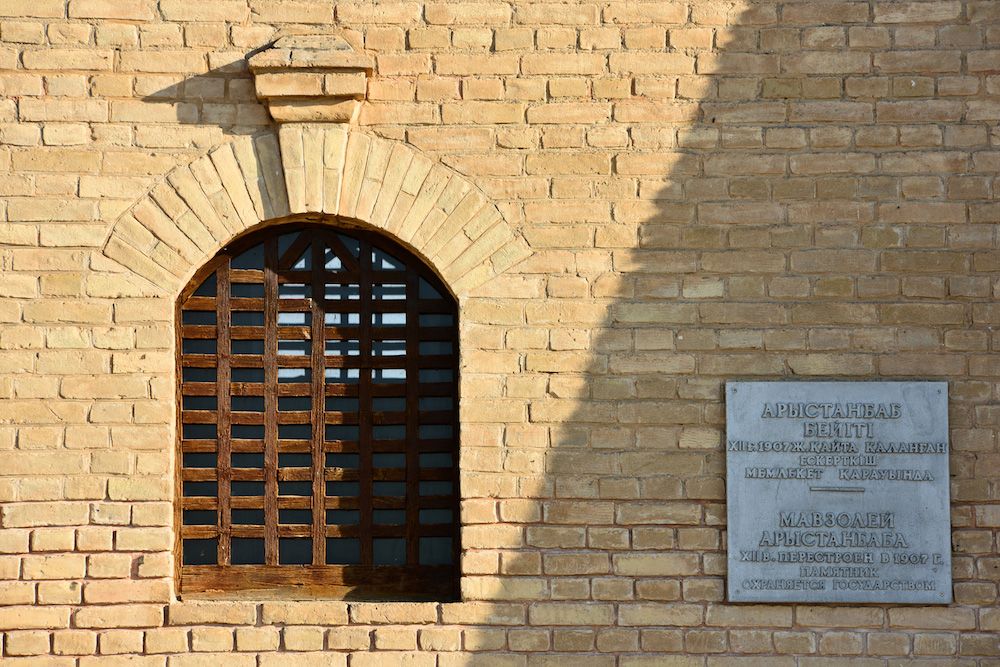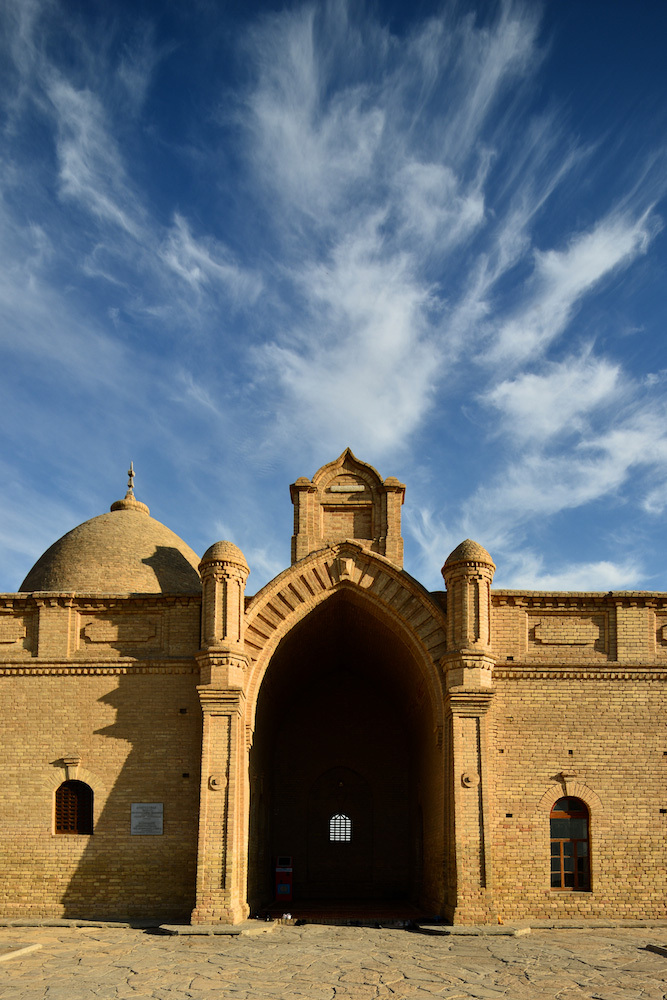
The mausoleum of Arystanbab is an interesting monument of architecture of the 12th-14th centuries built on the grave of Arystanbab, religious mystic, preacher and teacher and spiritual mentor of Khoja Akhmed Yassawi. It is located in 2 kilometers from the ancient settlement of Otrar and the village of Shaulder in 150 kilometers from the city of Shymkent. The memorial is one of the key worship places of Muslims of the region.
Preacher Arystanbab lived on outskirts of Otrar in the 12th century. The name Arystan in translation from the Kazakh language means “a lion”. In Sufi philosophy the Man of Way was called a lion. Arystanban travelled the entire world. He leant various religious courses. After converting to Islam he devoted all his life to teaching Sufi Islam. Arystanbab was a spiritual mentor of many supporters of Sufi teachings. Akhmed Yassawi tells about Arystanbab’s ideas and activities in his book “Divani Khikmet”. In his poems Arystanbab is described as his spiritual mentor and teacher. Yassawi got acquainted with him when he was seven years old. The teacher wished him to avoid evil and violence, express kindness and love to God.
According to one of the legends, Arystanbab lived for 400 years and was a supporter of Muhammad. The prophet told that after 400 years will be born the muslim, Akhmed. A persimmon from his dish must be given to him. Arystanbab suggested to do it and said: “If you ask Allah 400 years for me, I’ll give it to him”. He fulfilled his promise and gave Akhmet Yassawi a stone of the persimmon. Initially the mausoleum was built on his grave after his death in the 12th century.
Lately it was ruined by the Mongols. In the 14th century with order of Timur a new building was constructed on the place of the ruined mausoleum. Today only wood carved columns remained from the building. It was demolished and restored in 1909. In 1971 the mosque was destroyed due to high levels of underground water and rebuilt again.

Nowadays on the grave of Arystanbab stands a mausoleum with size of 35×12 meters. It is built with burnt bricks. The building consists of double-chamber table tomb and commemorative mosque combined with a big vaulted corridor. At large the mausoleum is a multi-chambered building. The center of the table-tomb is a majestic headstone of Arystanbab. In neighboring premises headstones of his students and followers — Khermet-Azyr, Kargabab and Lashynbab are located.
The mausoleum was built as a result of gradual enlargement of various elements of the building to the initial premises. The table tomb and the commemorative mosque were combines with common frontal wall of facade. The façade is wreathed with two minarets and decorated with figurative brick masonry.
In common, the style of construction, especially the style of the portal, is uncharacteristic to Central Asia. The portal is made with decorative elements of European and Russian architecture of the 19thcentury.
The only medieval element of the building is a pair of wood columns preserved from the second period of the mausoleum’s construction (14th-15th centuries). According to historical data, this mausoleum was several times rebuilt and restored during the 12th-18th centuries.

Currently the mausoleum is considered as one of the Muslim sanctuaries of Central Asia and a place of pilgrimage. Since 1982 the mausoleum-mosque of Arystanbab is protected by the government.
The article was written as part of 86 and 87 steps of the section “Identity and Unity” in the program “100 concrete steps” on joining the world’s 30 most developed countries.
